Baden-Baden, Germany, July 22nd - 25th, 1910
A little aviation meeting, while waiting for the Zeppelins
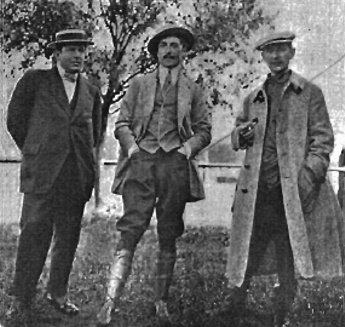
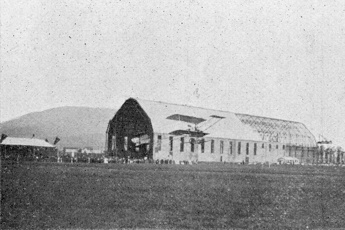
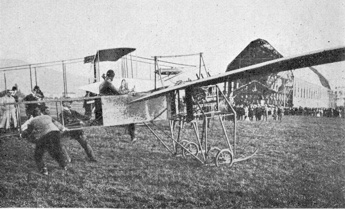
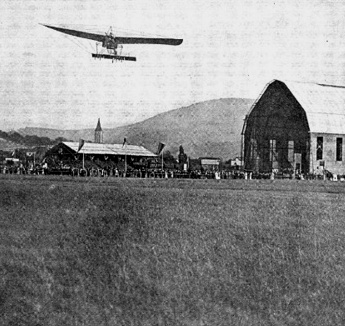
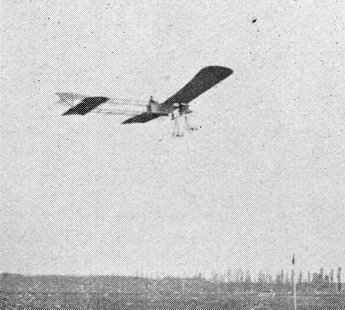
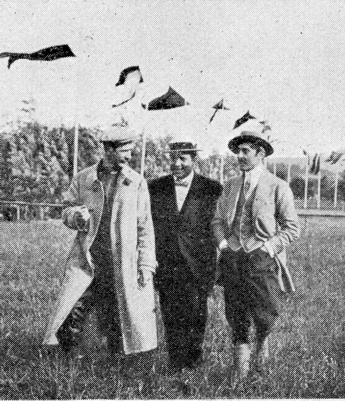
It has been very difficult to find photos from this meeting. If you know of any good photos please let us know!
Baden-Baden is a spa town in the state of
Baden-Württemberg in south-western Germany, on the small
river Oos. The town's hot springs at the
north-western border of the Schwarzwald (Black Forest)
were known already to the Romans and have been used ever
since. From the end of the 1700s, the springs were
developed to become an attractive resort for Europe's
noble, rich and fashionable, many of whom spent the
winters there, bathing and gambling at the casino. The
town's unusual double name indicates that it's
the town of Baden in the region of Baden, as opposed to
other towns named Baden (in old German meaning
"baths"), particularly in Austria and
Switzerland. The double name has been used since long,
but didn't become official until 1931. In 1910 the
town had 22,000 inhabitants and the spa had almost
100,000 visitors per year.
In late 1909 the town decided to build an airfield for
airships, in beginning to give the spa guests the
opportunity to take round trips, but there also plans for
passenger flights in and out of the town. Work on a big
airship hangar started in late 1909. It was not ready for
airship traffic until August 1910, but the Kurverwaltung
decided to organize an aviation meeting in July, perhaps
as a dress rehearsal for the inauguration. The meeting
was originally intended to take place on July 15th -
17th, but for some reason it was postponed until the
following weekend.
Initially four pilots were engaged, but after the
postponement Robert Thelen (Wright) dropped out, leaving
Emil Jeannin (Aviatik-Farman biplane), Adolf Behrend
(Schultze-Herfort monoplane) and Stefano Amerigo (Sommer
biplane). This was certainly not a big field of
competitors, but all were experienced pilots. Prizes were
offered for the highest altitude and the highest total
flying time, and daily prizes for the first flight of the
day (Frühpreis), and for the longest non-stop flight.
Friday 22 July
The first day of the meeting started with beautiful but
hot summer weather, which attracted many visitors from
near and far. The railway company reported that it had
sold 2,000 tickets to people travelling to the airfield
and there was an enormous traffic of automobiles and
wagons at the airfield.
During the afternoon clouds started to cover the sky and
a gusty wind started to blow, so the first flights were
not made until half past four, when Jeannin circled the
airfield twice at a height of 100 metres before landing
lightly and elegantly in front of the stands. This flight
of around two and a half minutes won him the first
Frühpreis. Behrend repeated the performance almost
immediately afterwards, his monoplane "flying over
the fields like a giant dragonfly". The pilots were
greeted with great applause after landing, since the
flights made the impression of complete safety.
After those flights there was a brief thunderstorm, but
when it had finished Behrend made three more flights and
Jeannin two. Then the weather got worse again, and since
there was no sign of improvement the flying was
terminated around half past seven. Amerigo couldn't
make any flights at all on the first day, since his
machine had been damaged during the transport to the
airfield.
The prize for the longest flight was not awarded, since
nobody reached the required 15 minutes. Jeannin's
longest flight was 10:08 and Behrend's 8:46. Jeannin
reached the highest altitude, 74 metres, but not enough
to reach the minimum of 100 metres to qualify for the
prize. In total, Jeannin had flown 21:17 in three flights
and Behrend 12:49 in four flights.
Saturday 23 July
The bad weather continued on the next day, with rain and
gusty winds. Amerigo had received a new machine and was
ready to fly. Jeannin and Behrend also kept their
machines fuelled and ready, but the weather didn't
change. They intended to try towards six o'clock, but
the weather turned even worse. The rain poured down so
badly that the officials and flyers fled to the hangars.
Most of the spectators had made for home within a quarter
of an hour after the start of the downpour.
At a quarter to eight the organizers and the flyers
decided to call it a day. It had been stated before the
meeting that if a day was rained out, the meeting would
be extended by the corresponding number of days up to a
week, so it was decided to extend the meeting until
Monday.
Sunday 24 July
The third day of the meeting again attracted very large
crowds to the airfield. The weather was sunny and bright,
but the wind was still strong and gusty. Therefore, the
flights couldn't start until a quarter to seven,
instead of the announced four o'clock. Behrend was
first in the air and claimed the Frühpreis. He also won
the daily endurance prize with a time of 16:09 and took
the lead in the speed prize, covering five kilometres in
6:20.2.
Jeannin left the airfield and flew over the countryside
north of the airfield towards Rastatt, but failed again
to win the altitude prize, reaching only 78 metres.
Amerigo finally made his first flights, but it was only
for testing the new machine. His two flights lasted in
total one and a half minutes.
Monday 25 July
The crowds were smaller than on the previous days, which
was quite predictable since it was a working day, and the
wind was still strong and gusty. The flights didn't
begin until towards six o'clock, when Jeannin made a
test flight. He had to abandon it quickly, though, since
the wind made his machine oscillate badly and made him
fear to lose control. Only towards eight o'clock did
Behrend win the Frühpreis, easily completing the required
two laps. Jeannin and Behrend then made some short
flights, but nothing that changed the total results.
Conclusion
When the figures were added up, Jeannin had won the total
endurance prize with a total time of 1 h 01:56, beating
Behrend by five minutes. Nobody had reached the required
100 metres to win the altitude prize.
This minor meeting with only two pilots making any
flights of significance was of course of no importance to
the international aviation scene, and hardly reported
even in the German aviation press. It was typical of the
minor meetings that were held in Germany in that it
included competitive events, as opposed to simple air
show-type events, which were more popular in other
countries, particularly in the USA.
Four weeks later the big Zeppelin LZ 6 would move in, but
that's another story...
 Back to the top of the page
Back to the top of the page
